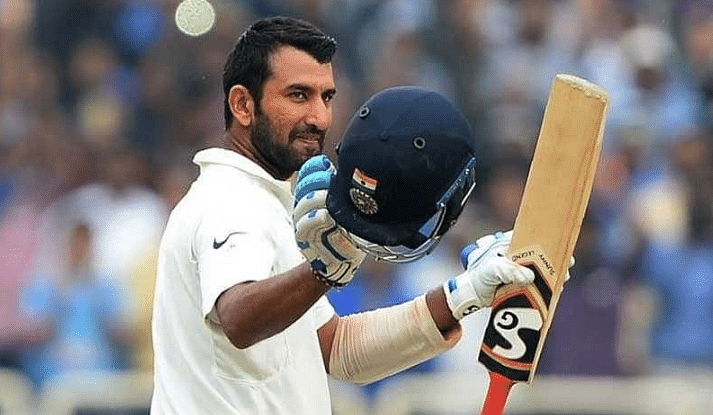Late American playwright John Patrick had once said: “Pain makes man think. Thought makes man wise. Wisdom makes life endurable.” Cheteshwar Pujara’s greatest strength is knowing his limitations. It’s an attribute that goes unrecognized. But it’s a vital part of a human being’s mental make-up. Knowing what you can do and where you stand.
This was best evident when he described his approach to Nathan Lyon, someone he had trouble against on the pitch in the past. “To be honest, I had issues with Nathan Lyon when he toured India in 2017. I was finding it difficult to deal with the spin, and Anil bhai had helped me plan differently for him. Don’t ask me the details, for I wouldn’t be able to share them, but it was Anil bhai who helped me evolve a plan for Lyon. Even after Adelaide, Anil bhai sent me a text, and it helped me counter Lyon right through the series. As a team we knew Lyon is one of their spearheads and it was important for us to neutralise him and I am glad our strategy worked and he wasn’t able to do much damage right through the series,” says Cheteshwar.
Cheteshwar Pujara can never be Rohit Sharma, for he doesn’t have Rohit’s range of strokes. But when it comes to putting in line both mind and body, the man from Rajkot is second to none. On January 19, he knew he had to survive the first two hours at the Gabba if India wanted to turn what till then looked like an improbable victory into a reality. To add to his challenges, on one side of the track there were cracks, which had been created as the match had gone on and the deliveries had started misbehaving frequently.
“It was tough, but I knew I had a job at hand. My game plan was simple on Day 5. We didn’t want to lose wickets in the first session because if Australia had to win the Test, they needed early wickets. It’s okay to be hit, for to stay on that pitch you needed to take those body blows. One particular end had variable bounce, and the ball misbehaved if it hit the cracks. If I tried to get on top of the ball like we do in normal circumstances, it could fly off the glove or the bat handle towards slips or gully,” Pujara explained to us during the course of an interaction.
Also read: Cheteshwar Pujara: The portrait of a Test cricketer as a team man
More than Brisbane, it was the third Test in Sydney that made the difference for Pujara. “I had started to find my groove in Sydney. In the second innings I had started to play my shots also, and the partnership with Rishabh was special. He played some outstanding shots, and I hardly ever told him to curb his instincts. Unless I felt he could get out, I let him be, and he was simply brilliant. I got out at a very wrong time in Sydney but if I did not, we could well have won the game. Vihari had a hamstring injury and that meant he couldn’t run and that constrained us more, making my dismissal that much more important. The partnership between Vihari and Ashwin was heroic, and I am glad they managed to save the game for us and give us a chance going into Brisbane,” he argued.
And then he said something that left us both stunned. “The choice was between taking some blows on the body or getting out. To tell you bluntly, I had to choose between being in pain and getting out. I chose pain for I needed to be out there for India and help my team either draw or win the game.”
Once Cheteshwar reached home, Arvind could hardly believe what he saw. “When he opened his T-shirt, I saw black spots everywhere. Those were blood clots and he could still manage a smile. My boy has always been a tough cookie.”
Since he knew that the balls rearing inwards had danger written all over them, he chose the ugly route. For his fans, it was an alpha-male act, and for sceptics—lack of range.
His critics might say that a set batsman, whether it’s Virat Kohli, Rohit Sharma, Shubman Gill or Rishabh Pant, they would all play the pull shot to such balls. For Cheteshwar, however, it is different, for he depends primarily on three shots—the square cut, the cover drive and the on-drive. For every Lionel Messi with the aura and grace that he exhibits, one needs a Jordi Alba; for every Robert Lewandowski that Bayern Munich recruits, the balance is brought by a Joshua Kimmich.
For India, Cheteshwar brings that balance.
